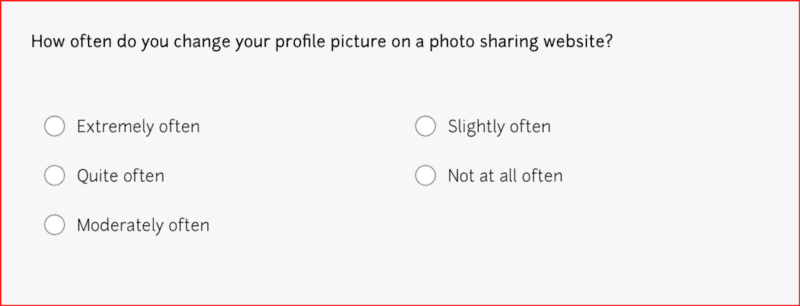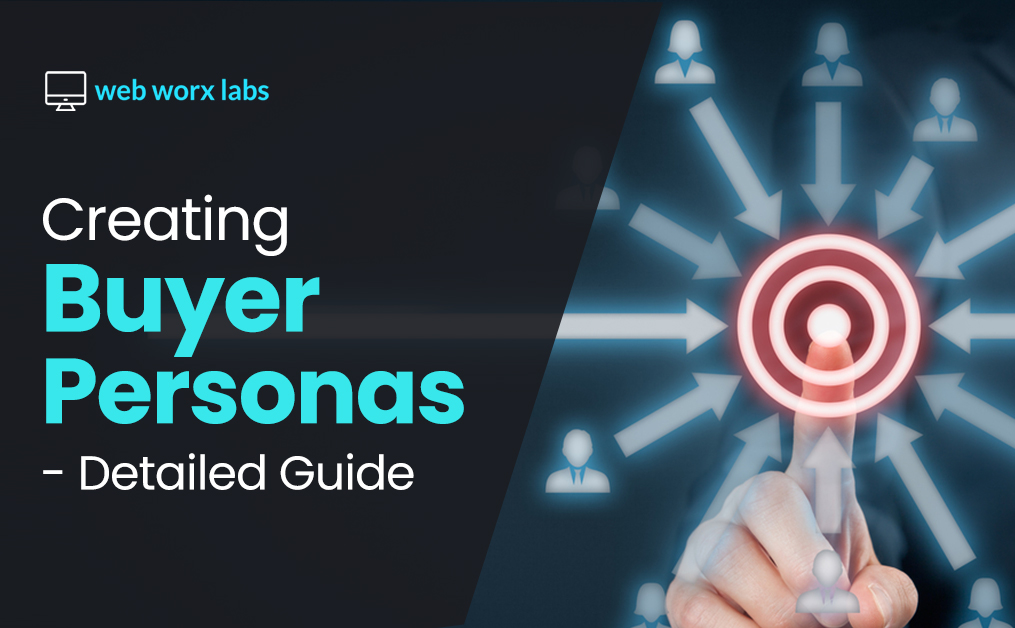Creating Buyer Personas – Detailed Guide
Creating Buyer Personas – Detailed Guide
If you have been in the marketing world, you may have heard the term “buyer persona.”
The term is tossed out casually, such that you’d think everyone understands it.
In this article, we get into the nuts and bolts of creating buyer personas the right way.
With digital marketing, you can easily target and segment potential clients. Gone are the days when entrepreneurs had to erect billboards hoping to reach the audience.
Fortunately, we are in an era where you can narrow down your audience to the type of people you want only by location, gent, interests, age, and behaviours.
For instance, Facebook is tailored to enable you to find the audience. If you want ladies aged between 25-30 who live in California, love skiing, drive an SUV, and binge-watching movies, you’ll be able to target that audience based on the data Facebook collects from its users for using its app.
For marketers, who are helping sales in getting the message out in front of the right audience, this makes it an appealing mechanism than what we had before big data and big tech!it will make it easy for you to serve them an ad.
These enhanced capabilities are sufficient. But how can you know the right people for your content? The two words will solve the puzzle: buyer personas. You can easily get lost tracking the latest engagement rates. Personas remind you to put the audiences’ needs and wants before yours.
This post dives deeper into making you understand buyer persona, how to create one, and its importance.
Related: Social Media Marketing
What is Buyer Persona?
The buyer persona is a fictional character who represents the characteristics of the best potential clients. Personas describe your ideal customers, the challenges they face, what they like, and how they make decisions.
Buyer personas can also be called marketing or customer personas. But whichever term you use, they all serve the same purpose. These personas enable businesses to empathize and understand with clients for better services.
When it comes to buyer personas, there are seven things we need to think about:
- Background – It includes detailed information about their role in an organization, their personal life such as married or not, do they have kids? It also includes the time they have served their companies.
- Demographics – This includes information such as gender, living situations, age, and household income.
- Goals – It consists of primary and secondary goals that resonate with your offering or services. For instance, if you’re retailing accounting software, the primary persona goal should be simplifying the overall accounting process.
- Objections- Why would these personas prefer not purchasing from your business?
- Solution – As a company, you need to think deeply about personas’ challenges and goals and determine how your products and services can help them.
Example of Buyer Persona

You can see the person resemble a live human. The information gathered creates a personification of this ideal client. The beauty of the persona is that it’s easier to sell than the theoretical idea
With this guide, you’ll find out how you can create a buyer persona for your business.
Creating Buyer Personas
Buyer personas should integrate both internal and external research. Some businesses need to create several personas to represent various customers. However, you don’t have to create all at once. Start small and allow your persona to progress over time.
The best thing is to pick one target audience and tailor a persona based on what you know and enhance it with in-depth research. Start with a list of questions you can use to interview your team.
Conduct Thorough Research
The buyer persona should be based on real data and not instinct. Assumptions should never cross your mind when creating a buyer persona.
Note: Not everyone is your target audience (unless you’re Google).
You need to compile data on the existing clients and social media audience. Please start with the people who want to engage with your content and are ready to buy from you. Some crucial data you may want to pay attention to include:
- Age: Here, you should focus on learning the generation or decade of life your audience is in. For instance, Generation Z is referred to as a smartphone generation. To them, everything needs to be visually attractive.
- Language – Don’t assume your clients understand your language. More so, avoid assuming they speak a dominant language of the current location.
- Location – You need to understand the time zones of your target audience. Get to know the geographical areas to enable you to deliver timely services. It also helps in scheduling appropriate time for social ads and posts. Good timing enhances visibility.
- Interests– Do you know what your target audience likes? Which TV shows do they watch? What kind of businesses do they interact with? What are their hobbies?
- Spending Patterns – What is the spending power and pattern of your target audience? What kind of purchases do they make? What are their preferences and financial concerns? Recent data from Ericsson suggest that, on average, users spend more than $21 per smartphone. Such data helps you segment the spending powers and patterns of your customers.
- Challenges – What are the pain points your audience is dealing with? And what are the reasons clients object to buying your products and services?
- Size of Business – This is particularly for B2B companies where they need to identify the businesses that interact and engage with them, whether enterprise-level or start-ups.
The customer data can also give you invaluable information needed to create a buyer persona. Start by learning where the audience spends most of their time online. With such information, creating a persona becomes a hassle-free task.
Tools such as HubSpot and Google Analytics are of great help.
Pinpoint Customer Pain Points
Every service rendered or product is designed to fulfill a particular need. For example, accounting software solves accounting issues and makes the process seamless.
However, only a few products hit among clients while the rest go unnoticed. A product’s success is attributed to factors such as marketing, cost, packaging, and so on. But a tremendous success of a product is in its ability to solve the pain points of customers.
So, what are the pain points?
These are the problems or hassles experienced by consumers. The brands take advantage of these gaps to do business. Types of pain points include:
- Productivity and convenience
- Shopping process
- Financial
From low-quality products to high prices to post-sales experience or broken links, brands that alleviate pain points and offer stellar customer experiences remain competitive.
To identify the pain points:
Use the right Questions to Survey Customers.
Sometimes you might wonder why you don’t get a response from customers. You may also think the survey is the issue.
The questions you ask, play a vital role.

Here is a sample of the questionnaire, but the options are too blunt. With the above example, you won’t get quantitative insight. Structure the options to quantify days, weeks, or months.
Let Your Sales Team Talk
Most brands go wrong by only focusing on existing clients and forgetting the lost prospects. And remember, a lost deal means there is a pain point that has not been solved.
Find out why a customer or prospect is lost and figure out how you can win them back.
Go deep in your process to reflect back on where you felt the connection was lost.
This is where your sales team can contribute to the buyer persona development process as well. They should write down their observation and reaction after every pitch. The analysis should comprise questions like:
- Which pain point did the prospect put forward?
- Was the product as per the prospect’s expectation?
- Why was the product turned down?
- What are some changes that could make the prospect buy the product?
Online Reviews Are Crucial
Reading online reviews will give you instrumental information about customer pain points. Read what consumers are saying about your brand on social media. You can easily find what people like and dislike about your brand.
Reviews also give you an insight into competitors and what they do best. Use this information to figure out what could work for your business.
However, ensure the authenticity of reviews. Lack of proper verification results in false data.
Pay Attention to Your Competitors
We live in a competitive world. Check your messaging strategy and customer approach. Evaluate their websites on things like pricing, features, and FAQs.
Google their ads and marketing copies.
Evaluate Customer Goals
Customer goals are the opposite of pain points. Goals are positive things your customers want to achieve. The goals might be professional or personal, based on the products and services you market.
So, what’s the end game for your customers? What motivates them?
Customer goals should resonate with the solutions you offer, though not a must. They help you know the type of campaign to hold and marketing strategy.
Offer a Solution
Now that you understand your customers’ goals and their pain points, it’s time you come up with a viable solution. Ensure you find out how services can help solve their hassles.
The products might have features, but how can they benefit your target audience? Will customers have a great shopping experience?
Capture the information and add it to the buyer persona template.
Come Up with Buyer Personas
After gathering all the information, segment common characteristics to get the basis of your customer personas.
For example, you’ve identified a group of mothers in their mid-30s who live in Denver, drive Subaru, and like hiking. You’ll then take this collection of characteristics and create the personas you can easily identify with.
Name your buyer persona, give it a home, job title, occupation, identifiers, and other characteristics.
HubSpot has a great template to help you create buyer personas seamlessly.
How Your Team Should Use Buyer Persona
After creating your buyer persona, you have a clear understanding of your customer characteristics. You’ll know what they like and dislike, their favourite news sources, and online publications.
Once you create a buyer persona for your brand, ensure it doesn’t go to waste. And here is how your team can use personas.
Empathy Mapping
Brands need to understand the target audience better and accurately. This way, they can develop viable and effective solutions through various methods, and empathy mapping is one of them.
Empathy mapping is an effective business tool that complies assessment of feelings and perceptions of the target audience.
The team should use empathy mapping to identify customer thoughts, actions, and feelings. The method mainly focuses on empathy instead of data.
Documenting Exact Pain Points
Buyer personas make online marketing more effective and offer a long-term solution. Creating a persona takes detailed preparation, thought, and research. Since it’s based on facts, a company can use it to identify and document exact pain points.
You may find out that your clients are frustrated about poor services and the lack of support they need. It could be about the accuracy of information and timelines. With this information, you can improve your services and invest in high-quality and reliable customer messaging platforms.
Creating Multiple Personas for Different Product Offerings for Your Brand
With a complete buyer persona, you tend to fetch various information about product usage. Clients have different tastes and preferences. You’ll find all the necessary data to create multiple personas.
Remember, you need to tailor your products to suit customer needs and not the other way round.
More so, you’ll manage to expand your line of product and service delivery, leading to more revenue collection.
Demographics Info
Demographic data can provide more profound insights into the target audience.
Additionally, it’s used as a basis for business performance and analysis. It’s used for strategic targeting and is key in customer analytics.
Demographic data entails age, family status, nationality, gender, residence, income, and occupation.
Using demographic information on a buyer persona, the team can segment user groups for effective marketing or remarketing campaigns.
Psychographic Info
Psychographic information gives you more insight. With a buyer persona, the team can easily understand customers’ personality traits, interests, activities, and beliefs. You can also identify social class, income, buying powers and patterns, and more.
Segmentation is an important marketing strategy. It enables businesses to tailor content for particular groups based on interests, values, and preferences.
Benefits of Buyer personas for Your Brand
Buyer personas offer a myriad of benefits, including:
- Targeted Market – This is one of the significant benefits of creating buyer personas. You can easily segment your marketing campaigns for targeted, personalized content. Personalization leads to long-term relationships, enhanced services, and impressive results.
- Better Understanding – Creating a buyer persona gives you a better understanding of your customer needs. 90 percent of brands using personas develop a clear understanding of their customers. Knowing your buyers on a deeper level creates a better connection. You will have a better sense of their demographic info, shopping habits, likes, habits, and pain points.
When you understand clients, you give personalized attention and services. You’ll communicate in their language and distribute using their favourite channels.
- Better Partnership – Buyer personas are excellent tools for sales personnel. They give them an idea of whom to target and what to sell to each segment. The sales teams take note of consumer behaviour, and they can establish a good relationship with the said customers.
- Enhanced Efficacy – Every company hopes to have a successful marketing campaign. However, most end up with futile marketing plans since they cannot find the right target.
Missing the target can adversely affect the business by reducing revenue.
Fortunately, buyer personas have shaped the marketing world by making your efforts more efficient.
It gives you a clear focus on whom to target and when. Your campaigns become efficient with less waste of resources and increased sales. Personas save you time and money.
- Overcome Objections – When it comes to marketing, knowing the pain points of buyers is crucial. You’re able to know what they don’t like and why. It allows you to identify various barriers that make them object to your products and services.
You modify your content to suit their taste and preference. Your sales teams will also be prepared to handle customers better.
- Increased Revenue – Now that you’ve identified pain points and overcome customer objections, you can expect increased sales. Buyers feel appreciated when they get customized services. With this, the results will be boosted sales for more revenue.
- Identify Negative Personas – Directing your marketing to the wrong audience will hurt your business financially. It means you’ll carry out ineffective marketing campaigns by chasing down the wrong prospects.
Identifying negative personas enables you to know the potential audience. As a result, you spend your time and resources on the right target.
Wrapping Up
Creating a buyer persona can be unnerving, but this step-by-step guide will walk you through every stage. You’ll manage to create a customized buyer persona for enhanced efficiencies and sales.
Have thoughts to share – let us know how we can improve or update this article. We would love your feedback.
Good luck in creating your personas!
